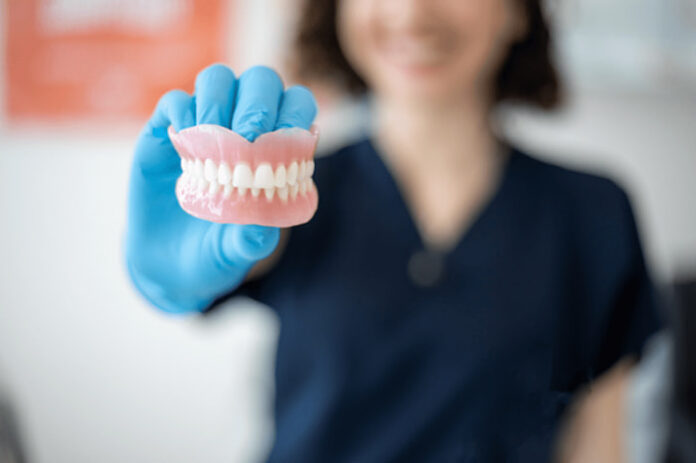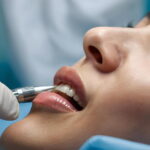Understanding Partial Dentures: Types and materials
Think of partial dentures as custom-tailored clothing for your mouth—each style and substance plays its distinct role. There are three principal varieties:
- Acrylic partial dentures are affordable and straightforward but tend to be thick and less discreet—like wearing a cozy but bulky sweater.
- Metal-frame partial dentures offer a sleeker profile, with narrow clasps that tuck under existing teeth, providing a robust and reliable fit.
- Flexible partial dentures —fashioned from a pliable, nylon-like resin—hug your gums comfortably, blending shine and suppleness.
Material choice profoundly influences both feel and looks.
If you’re researching options, exploring Partial dentures can unlock insight into materials and styles designed not just to restore, but to complement YOU.
Achieving natural-looking aesthetics with partial dentures
A truly seamless smile is not merely restored—it’s recreated. Skilled technicians blend art and science by:
- Fine-tuning the shade of prosthetic teeth so they replicate translucency, vibrant hues, and even tiny flecks present in your natural enamel.
- Shaping the teeth to mirror your original incisors, canines or molars, factoring in your bite, facial profile and tooth wear patterns.
- Using gum-colored bases that match your gingiva in tone and subtle translucency, preventing that “fake gum” look.
- Concealing clasps , often opting for tooth-colored resin or tucking them behind structures so they’re nearly invisible.
Seen in good light, a well-crafted partial denture doesn’t shout “I’m not real”—it radiates the same quiet confidence as your natural smile.
Ensuring comfort: fit and adjustments
Comfort is where the rubber meets the road. A few essentials make all the difference:
- Precision impressions capture every curve and contour of your gums and remaining teeth. This high-fidelity mold is the map that guides comfortable fit.
- Initial fittings often require tweaks , as soft tissue adapts and impressions settle.
- Over time, gums may change shape—calling for professional relining or rebasing to refresh how the denture sits.
The impact of partial dentures on speech and eating
No surprise here—putting anything new in your mouth alters how it works. Here’s what to expect:
- Speech : In the first days, sounds like “s,” “sh” or “th” may sound odd. According to Polident, this lisping is common—and perfectly normal. Most people recover clarity within a few weeks by practicing with mirrors, reading aloud, or slowly conversing.
- Eating : Chewing efficiency might dip initially, especially with dense foods. A global review notes improved chewing cycles and bite force once accustomed .
- Adaptation : Usually, 2–4 weeks are enough to soften initial friction. After a few months, many almost forget anything has changed .
To ease the transition:
- Start with soft, easy-to-chew foods—yogurt, porridge, tender vegetables.
- Slice meals into small bites.
- Chew evenly on both sides.
- If needed, add a bit of denture adhesive for extra confidence.
Long-term care for durability and comfort
Longevity for partial dentures is not accidental—it’s intentional. Here’s how to care like a pro:
- Daily cleansing : Use a soft brush and a denture-friendly cleaner. Avoid toothpaste or bleach, which can scratch or weaken the material.
- Soak overnight , both to disinfect and to relax your gums.
- Visit your dentist yearly (or more, if issues arise) to check fit and oral health.
- Watch for wear : Discoloration, rough edges, or fit issues signal the need for a reline or replacement.
- Typically, relining or rebasing is advised every 2–3 years, depending on wear and changes in gum contours.
Proactive attention prevents discomfort, enhances hygiene, and extends the life of your restoration.
Alternative solutions: comparing partial dentures to other options
Partial dentures and dentures calgary are one option on a spectrum that includes bridges and implants. Here’s a balanced view:
Partial dentures
- Pros: affordable, adjustable, reversible, and suitable for multiple missing teeth.
- Cons: removable, requiring daily cleaning and occasional adjustments.
Fixed bridges
- Pros: permanent, stable, and natural-looking.
- Cons: involve shaving down healthy adjacent teeth and can be costlier.
Dental implants
- Pros: single-tooth solutions, bone preservation, high aesthetics, and stability.
- Cons: invasive surgery, longer healing, substantial initial cost.
Surveys confirm patients prioritize comfort, chewing ability, and budget—criteria where partial dentures often perform favorably . It’s a practical middle ground when implants are unavailable or unwanted.
In conclusion, partial dentures offer a versatile, functional, and aesthetic solution—especially when crafted from modern flexible materials and cared for properly.
Did you find this helpful? Check out our other helpful articles on our website.
Read Also
- Ketamine-Assisted Therapies: Impacts on Employee WellbeingWorkplace stress is common today. Many employees feel tired, anxious, or burned out. Regular therapy can help, but some people need more support. Ketamine-assisted therapy is showing good results for mental health. A ketamine-assisted therapist guides each session safely. This therapy can improve mood, focus, and energy. Learning more about it can help teams stay… Read more: Ketamine-Assisted Therapies: Impacts on Employee Wellbeing
- The Future of Men’s Health: Why Telehealth Is Here to StayTelehealth isn’t just a pandemic trend that faded into the background. For Australian men, it has become one of the most practical, time-saving, and stress-free ways to manage everyday health — and it’s shaping the future of how we access care. Platforms like DOCTO, an Australian online doctor and specialist telehealth service, are leading the… Read more: The Future of Men’s Health: Why Telehealth Is Here to Stay
- How to Build a Simple, Clean Skincare Routine ?You don’t need a complicated skincare routine. It doesn’t have to be something that requires twenty different products and confusing steps. Your routine works well with just a few high-quality clean ingredients. The beauty industry keeps pushing more products, but your skin actually needs less. You only need a simple approach to get better results… Read more: How to Build a Simple, Clean Skincare Routine ?
- How Preventive Dental Care Supports Overall HealthHave you ever wondered how a simple dental checkup could impact your entire body? Oral health is more than just a bright smile. Studies show that poor dental habits can contribute to serious health problems. Gum disease and tooth decay are linked to heart disease, diabetes, and infections. Yet, many people overlook preventive dental care.… Read more: How Preventive Dental Care Supports Overall Health
- Seeing Clearly in a High-Tech World: A Deep Dive into Advanced Vision Care ServicesProtecting your eyesight isn’t optional—it’s essential. Modern eye care has evolved far beyond basic exams, offering advanced diagnostics, personalized treatments, and surgical innovations that keep vision sharp for life. A leading example is Intermountain Eye Center, home to specialists like Dr Fishburn Boise, where patients receive comprehensive, high-level vision care designed to preserve long-term eye… Read more: Seeing Clearly in a High-Tech World: A Deep Dive into Advanced Vision Care Services
- Why the Keto Diet Works for Some People—and Fails Dramatically for Others: An Ayurvedic Breakdown for Modern HealthcareThe keto diet has dominated weight-loss culture for years. For some people, it produces rapid fat loss, stable energy, and improved mental clarity. For others—especially those who gain weight easily—it leads to burnout, digestive distress, rebound weight gain, high cholesterol, and a metabolism that feels slower than before. Healthcare often frames this as a discipline… Read more: Why the Keto Diet Works for Some People—and Fails Dramatically for Others: An Ayurvedic Breakdown for Modern Healthcare
- How to Choose the Best Assisted Living Facility for SeniorsAre you looking for the right assisted living facility for a senior loved one? Choosing a place can feel overwhelming. There are many factors to consider, from care services to the environment. Safety, comfort, and social opportunities play important roles in daily life. Each senior has unique needs and preferences that must be met. Understanding… Read more: How to Choose the Best Assisted Living Facility for Seniors
- Burn Smart, Not Hard; Shape Burn: Clean Protein for Weight ManagementYou want to feel light, strong, and confident. You don’t want crash diets or fake promises. You need a plan that works with your body, not against it. That’s where Shape Burn comes in. You can burn fat without losing strength. You can eat better and stay full. You can manage weight in a way… Read more: Burn Smart, Not Hard; Shape Burn: Clean Protein for Weight Management









